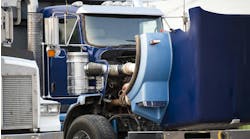Whenever we talk about electric vehicles, the issue of the cost of those vehicles gets raised. That isn’t surprising given that savvy fleets are so focused on total cost of operation (TCO). It is rare today that a TCO case based only on “hard costs” can be made for battery-electric vehicles (BEVs) in commercial applications. At NACFE, we would argue that when you factor in “soft costs”—especially the fact that drivers love BEVs and that more companies are instituting sustainability goals and are expecting carriers to help them meet those goals—that there is a growing TCO case for BEVs today.
We've also said that, for BEVs to scale in the trucking industry, it will take a coordinated effort from a variety of stakeholders, including truck makers, fleets, utility companies, government, and others. We also know that grants and incentives to help fleets with the initial costs of BEVs will play a role in seeing more fleets begin to order and operate BEVs in larger numbers.
See also: Small fleets turn to fleet-as-a-service provider to begin electric journey
Enter The Inflation Reduction Act (IRA). Part of the IRA is the Qualified Commercial Clean Vehicle tax credit. It provides up to a $40,000 tax credit for the purchase of a BEV. Our partner, RMI, believes this will “turbocharge adoption of electric medium-duty and heavy-duty trucks.” I tend to agree with them. With the tax credit, owning an electric truck will be cheaper than owning a diesel one, in many use cases.
The work we did in Run on Less – Electric showed that there are certain market segments—vans and step vans, medium-duty box trucks, terminal tractors, and heavy-duty regional haul tractors—for which there is already a strong use case for switching to BEVs for all or part of the vehicles in those duty cycles.
See also: What does 'the messy middle' really mean?
The tax credit from the IRA just serves to strengthen the fact that for these market segments today, BEVs make good sense. For other use cases, there are still issues that need to be worked out, including the construction of a nationwide charging network for fleets that operate longer haul runs where trucks will need to charge on the road and not just where they domicile. The good news is there are folks working on those issues as well.
At some point BEVs will have to stand on their own from a TCO perspective, but for now we should look at the IRA tax credits as another tool to help us along the path to electrification and a cleaner future for trucking and the planet.
Michael Roeth has worked in the commercial vehicle industry for nearly 30 years, most recently as executive director of the North American Council for Freight Efficiency (NACFE). He serves on the second National Academy of Sciences Committee on Technologies and Approaches for Reducing the Fuel Consumption of Medium and Heavy-Duty Vehicles and has held various positions in engineering, quality, sales, and plant management with Navistar and Behr/Cummins.



